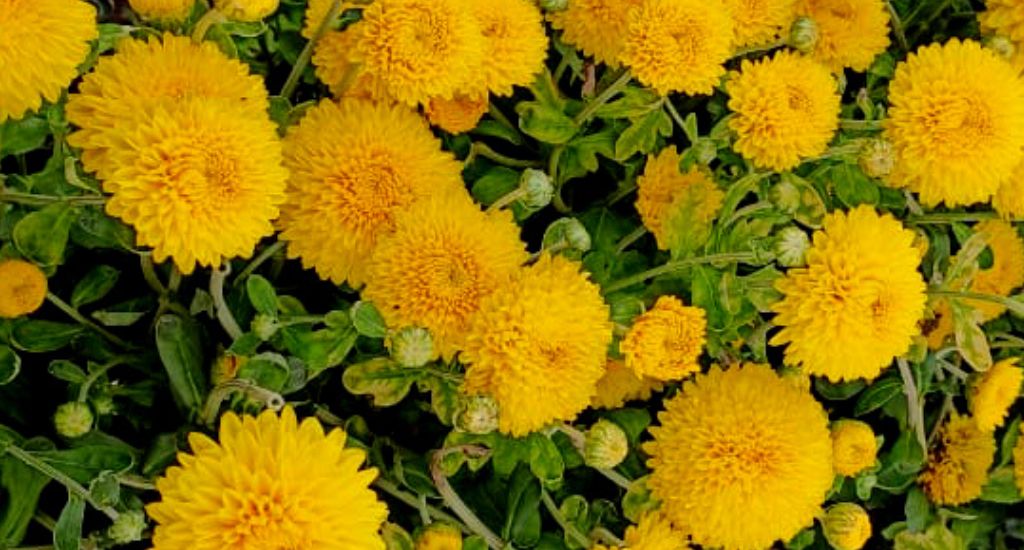
Money blooms in India’s ‘flower village’ of Nikamwadi in Maharashtra
Farmers have almost abandoned water-thirsty sugarcane for more colourful, and profitable, crops – marigold and chrysanthemum – which fetch them around Rs 10 lakh a year.

Farmers have almost abandoned water-thirsty sugarcane for more colourful, and profitable, crops – marigold and chrysanthemum – which fetch them around Rs 10 lakh a year.
Are gardeners made or born? For an answer to that proverbial question, head to Satara, Maharashtra and take a look at the chrysanthemum and marigold farms of Nikamwadi village. Colourful field of flowers spread as far as the eye can see with fiery yellow and orange carpets.
About two decades ago, farmers of this village in the Krishna river basin grew just two cash crops, sugarcane and turmeric, that just about helped the average producer to get by.
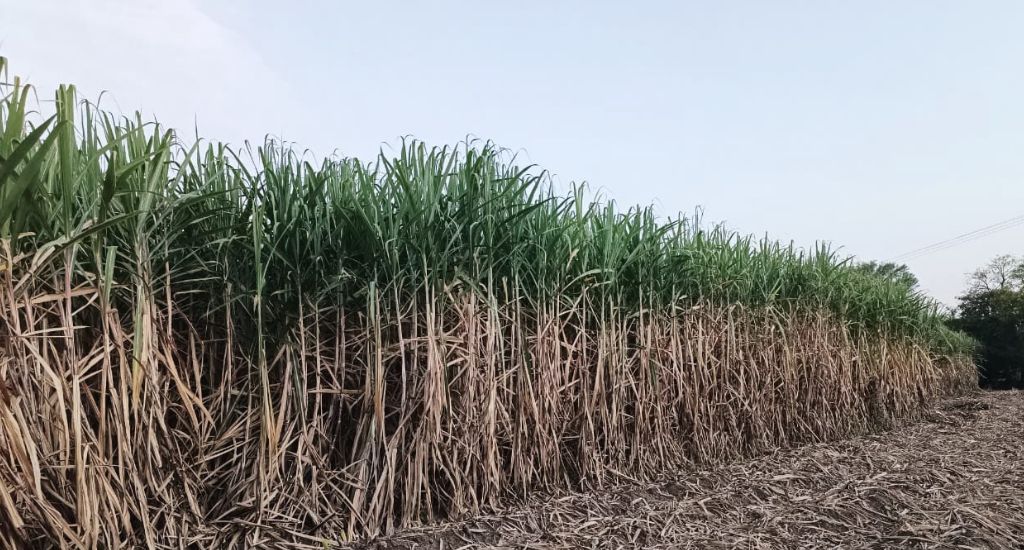
Though these two are still grown, flowers are now bringing joy and prosperity to Nikamwadi.
It all began in 2005. A handful of farmers – led by Dharmaraj Ganpat Deokar, now 60 – heed some advice from an agricultural officer and took a daunting leap of faith and planted the first marigold beds.
The village of 170-odd households is today known as “phulancha gaon” (flower village), with 200-odd acres solely devoted to floriculture.
“Come here, any season, and you’re likely to come across lush fields with blooming jhendu (marigold) and the multi-coloured shevanti (chrysanthemum),” said farmer Vishal Nikam, 37, pointing to the blooms glowing in the midday sun.
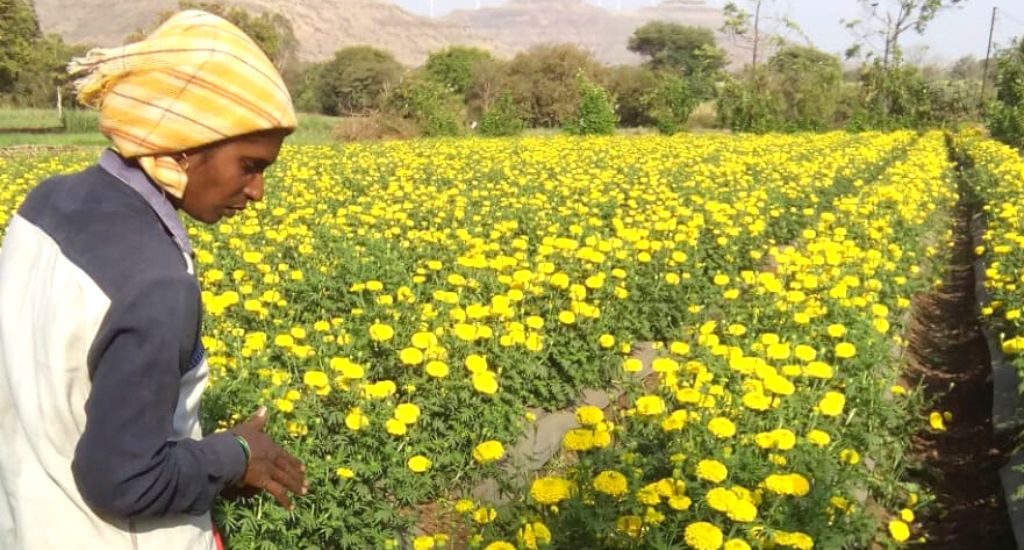
Nikamwadi and its surrounding villages grow eight varieties of chrysanthemum hybrids such as Poornima White, Aishwariya Yellow and Pooja Purple. Chrysanthemum is a winter crop, with a 120-day season from December to March.
Also Read | West Bengal’s flower trade booms beyond state borders
The perennial marigolds grow round the year.
“Pitambar Yellow, Tennis Ball and Calcutta Yellow are among the six preferred varieties of customers,” said Shaliwan Sable of Om Agro Technology Nursery, one of the hundreds of nurseries that have sprung up in the area. “We sell around 20 lakh seedlings annually.”
Nature’s beauty is rapturous – its bounty weighs in gold.
But to mine this treasure, like in any form of agriculture, it takes immense hard work—planting, weeding, irrigating, and picking flowers from dawn to dusk.
And then, loading pick-up trucks with flowers before they leave for the markets in the evening. At the end of the day, though, the money presents the soothing balm.
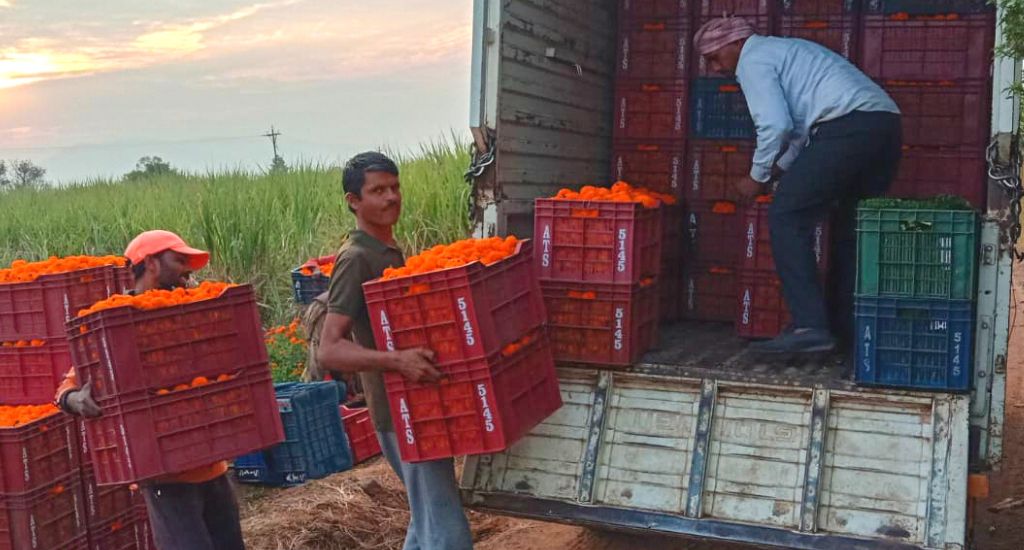
With an average annual yield of around 10 tonnes an acre, Nikamwadi’s farmers make about Rs 10 lakh a year—much more than the turnover from sugarcane and turmeric.
No doubt, many have abandoned the thirsty sugarcane crop.
The acreage of sugarcane has shrunk in recent years, exacerbated by the farmers’ deep distrust of mills that they say cheat when weighing their produce and don’t pay on time.
“The (sugarcane) mills make people wait for over 18 months for their money. Growing flowers is lucrative as we receive our payments every week,” said Sanjay Bhonsle, 55, taking a break from tending his field of Poornima White chrysanthemums.
Nikamwadi’s gardeners use drip irrigation, sourcing water from baodis (wells) that are replenished by canals from the Krishna.
Such horticultural innovations can make farms more sustainable, eco-friendly and healthier, and protect the complex interrelationship of humans with nature.
“Only a handful of families with large land holdings grow sugarcane these days,” said Santosh Deokar, 45, who owns eight acres. He cultivates sugarcane on one acre because of the volatility in the flower market.
The flower economy is driven by hierarchy – blooms like rose, carnation and gerbera occupy the premium position in terms of prices they attract, followed by bulbous blossoms like tube rose and gladiolus.
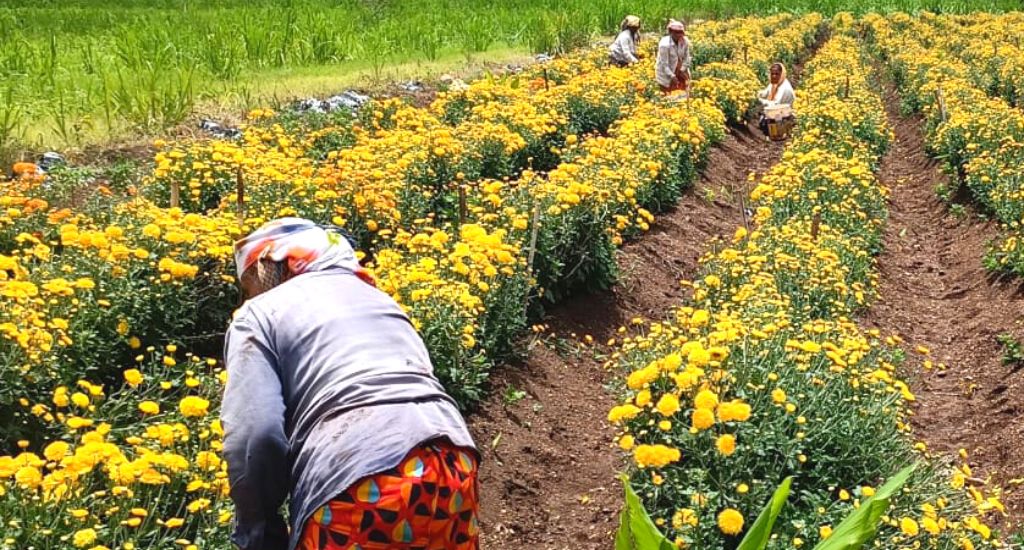
Marigold and chrysanthemum are assigned the lowest rung.
But Nikamwadi makes up for it by the sheer volume of flowers it produces. About 12 tonnes are shipped every day on seven pick-up trucks to Pune’s Gultekadi market, 100km away.
Also Read | Flowers bring women sweet scent of success
Though the village is close to the temple town of Wai and Satara, the district headquarters, farmers prefer Pune where the demand is high. Demand peaks during the festive season, from Ganesh Utsav and stretching till Diwali and Gudi Padwa.
Agriculture official Vijay Warale said Nikamwadi’s farmers make around Rs 2.5 lakh an acre from chrysanthemum, while marigolds bring around Rs 2 lakh an acre.
Flowers are a flourishing business in Maharashtra, where 13,440 hectare are devoted to floriculture. It’s also the first state to have a floriculture policy in the 1990s.
Neighbouring villages have taken to floriculture too, but what sets Nikamwadi apart is every household grows flowers – whether someone owns a couple of gunthas (1,000 square feet), or many acres.
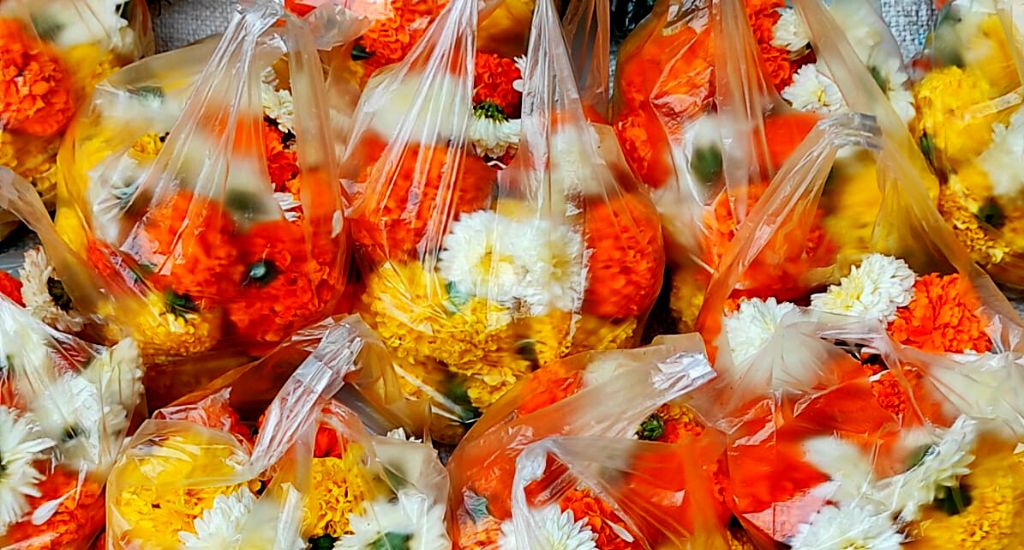
And it is their participatory spirit and collective approach that make Nikamwadi a model village.
They are also aware of the pitfalls of monoculture cropping.
Apart from growing regulars like sugarcane and turmeric on small patches, many farmers intercrop the flower fields with parsley – an herb in high demand abroad and Indian metropolises.
“We cultivate dhaniya (coriander) for kitchen and parsley to sell. We spend Rs 1.5 lakh and the yield fetches Rs 3.5 lakh,” said Sanjay Bhonsle, whose five-acre farm is an example of multi-cropping.
The lead image at the top shows Chrysanthemum in bloom (Photo by Hiren Kumar Bose)
Hiren Kumar Bose is a journalist based in Thane, Maharashtra. He doubles up as a weekend farmer.